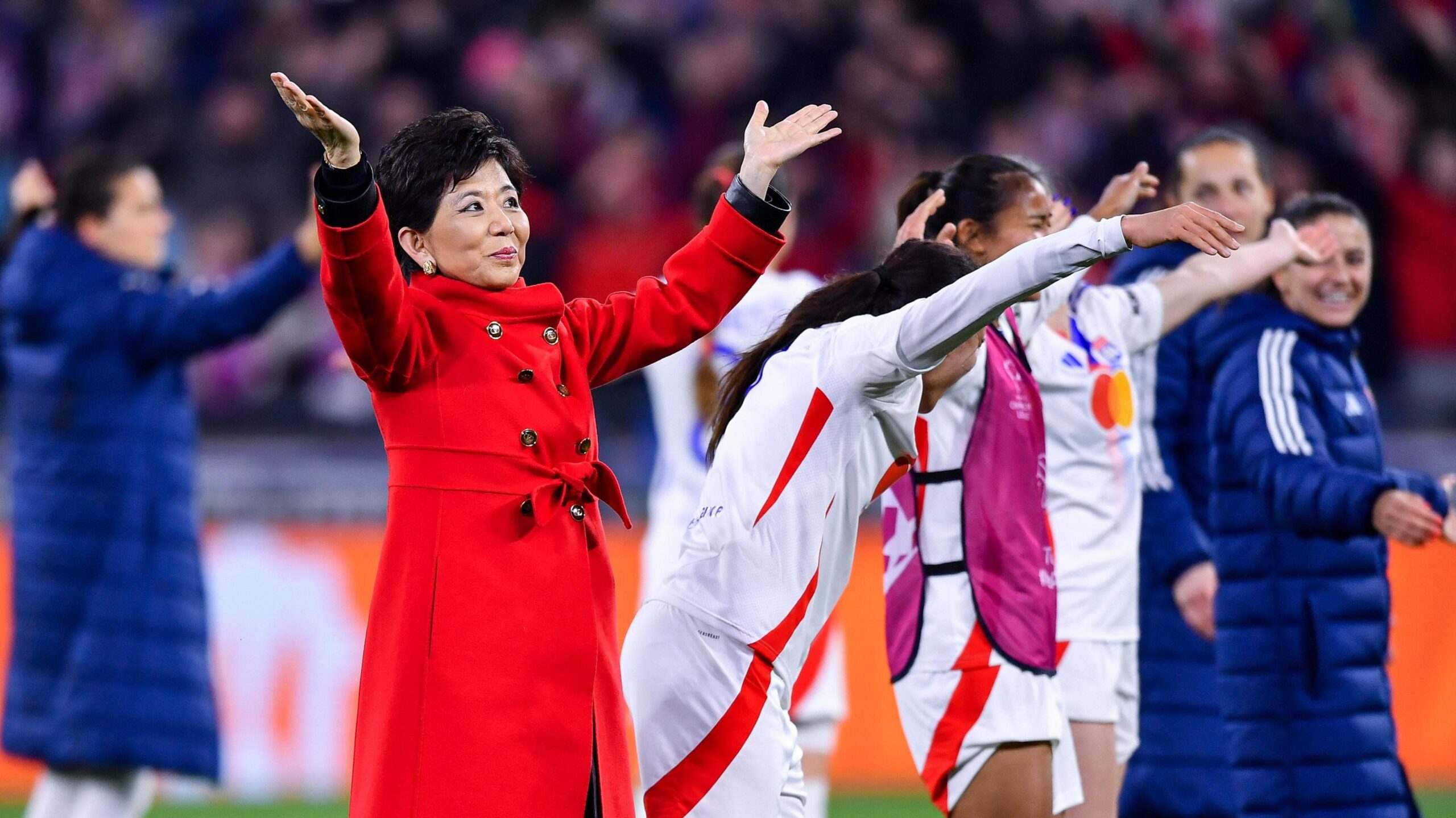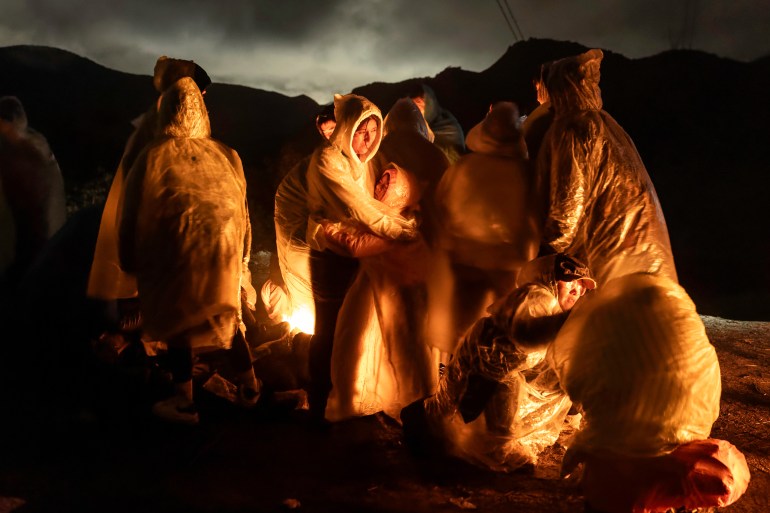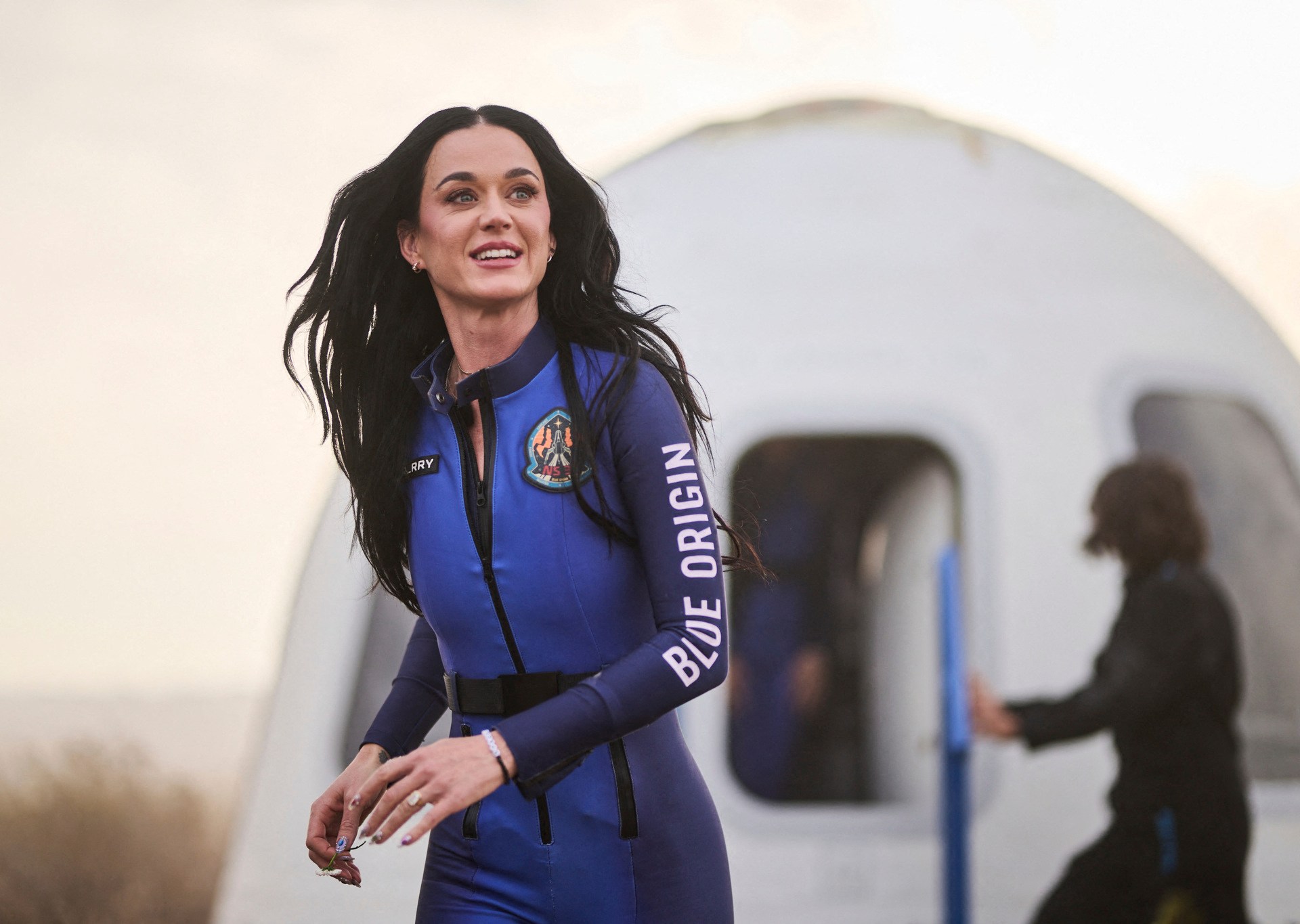Success is synonymous with Olympique Lyonnais Feminin.
Since being established in 2004, the French club have become one of the superpowers in women’s football, lifting 38 trophies across the domestic and European stage.
Their record in the Women’s Champions League is unparalleled, winning the competition eight times in an 11-year period between 2011 and 2022.
While Lyon remain a formidable force in the women’s game, with a record-extending 12th European final appearance on the horizon if they overcome Arsenal over the next fortnight, other teams are catching up in terms of both investment and on-field success.
In recent years they have been usurped on the European stage by fellow semi-finalists Barcelona, who are just three matches from a third Champions League title in a row.
From ‘ahead of his time’ Aulas to billionaire Kang

For more than 30 years, local businessman Aulas was Lyon.
After becoming owner and president in 1987, following pleas from the city’s mayor and F1 legend Alain Prost, he oversaw the men’s club’s transformation from a debt-ridden club languishing in the second tier to serial trophy-winners throughout the 2000s.
Determined to replicate that success in women’s football, he launched OL Feminin in 2004 and, under his ownership, the club attracted top overseas players, championed French talent like Wendie Renard, and opened France’s first mixed-gender academy.
It took three years to deliver silverware, winning the Premiere Ligue in 2006-07. The rest is history.
“This guy was ahead of his time,” former Lyon defender Lucy Bronze told the BBC’s World Service. “To have someone that powerful say I want the women’s team to do well, I want them to be the best, I want to give them everything.

Aulas’ ownership ended in 2022 when Eagle Football became the majority shareholders of the OL Groupe, which encompassed both the men’s and women’s teams – as well as a majority stake in NWSL side Seattle Reign, and he resigned from his 36-year presidency the following year.
In 2023, the women’s team changed hands again, with South Korea-born American businesswoman Kang, who made her fortune in healthcare IT, taking on majority ownership and making it a separate entity – “independent” – from the men’s team.
“We have reached the end of our model a bit,” chief executive Vincent Ponsot said. “I think we needed a new lease of life, a new project. That is exactly what Michele brought with a much more global vision.
Who is Michele Kang?

Described by the Financial Times as “arguably the first tycoon in women’s football”, Kang is a relative latecomer to football.
She first became interested in the sport after meeting the World Cup-winning US women’s team in 2019 and has since built up a portfolio of teams under her Kynisca Sports International group. In addition to Lyon, she has been the majority owner of NWSL team Washington Spirit since 2022 and purchased Women’s Championship side London City Lionesses in 2023.
“I realised these are the best of the best athletes around the world,” Kang said, reflecting on her meeting with the USWNT.
“I saw a significant lack of resources and attention. I saw the possibility of how women’s football could explode with a little nudge and a little investment.
“I am not alone and there are a lot of people who share the same passion. Two billion people watch the World Cup – it’s growing.”
Kang’s interest isn’t limited to multi-club ownership, however, with a number of multi-million pound investments in women’s sport, including a £39m global investment in improving the health of elite female athletes.
Her plans for Lyon are no less grand. Her long-term ambitions include the construction of a dedicated women’s centre, with a 15-18,000-seater stadium and a bigger training facility, while she has already invested heavily in improving the club’s backroom staff.
“The first thing she said to me was ‘Vincent, what do you have to do for the OL women’s team to have the same supervisions as the professional men’s team?’. That was in August 2023,” Ponsot said.
“I told her, ‘we have to hire 11 people to the staff’, and she said, ‘go on then’. Two months later, we had 11 more people and 24 staff to improve the support to players so they can perform.
“The main thing we have evolved is in the performance sector. We have full-time nutritionists, physiotherapists, doctors, a performance manager, a psychologist. We have everything we need for the players to be in the best conditions to perform like the men’s team.”
Lyon midfielder and USA captain Lindsey Heaps added: “[Michele] is incredible. I have never seen anything like this in the women’s game, the sort of investment but also the way she speaks.
‘A vicious circle’ – the challenges in France

Another of Kang’s priorities is increasing attendances at Lyon fixtures.
“If you ask many female players what is at the top of your wishlist, they don’t say I want to get paid more, I want bigger cars. They say, ‘I want to play against the best players and best teams in a sellout stadium’. It’s my job that we fill the stadium,” she said.
Lyon will travel to Emirates Stadium on Saturday (12:30 BST) for the first leg of their Champions League semi-final with Arsenal – a stadium where the Gunners recorded an average attendance of 52,029 across six matches last season.
“When you see that Arsenal are filling Emirates Stadium, there is no reason why we can’t,” said Ponsot. “We realised that women’s football has an audience with a strong increase in appetite, but we are having trouble making it a reality.”
Lyon are on course for a record-extending 18th league title this season, having already booked their place in May’s end-of-season play-offs. Indeed, they have only lost two league matches over the past four seasons.
That sustained success, coupled with Aulas’ unmatched support, is seen by some as having had a negative impact on crowds, media interest, and investment in France.
Women’s football journalist Assile Toufaily said: “Some will say ‘why should we come and watch football that isn’t attractive because the level isn’t that good?’ We know OL are going to smash the other clubs 7-0. Fans aren’t intrigued to come and watch.
“They say if you want to have a better level of football, investors have to invest. Investors will then say why should we invest if the media isn’t promoting the game? So you find yourself in a vicious circle and it’s been like this for years.”
But she does not see Aulas’ investment as the problem.
“If he didn’t invest in 2004, maybe no-one would ever have done it in France. Aulas isn’t to blame, but maybe the problem is others didn’t follow along.”
Kang, unsurprisingly, is undaunted by this, working with Ponsot to “find the profile” of women’s football fans, with their own research indicating only a 5% overlap between fans who watch men’s and women’s matches.
She will likely find a powerful ally in Aulas, who was elected vice-president of the French Football Federation in December 2023 and has taken over responsibility for development of women’s football.
“The French league is going to be very strong in years to come,” vowed Aulas.
Related topics
- Football
- Women’s Football


